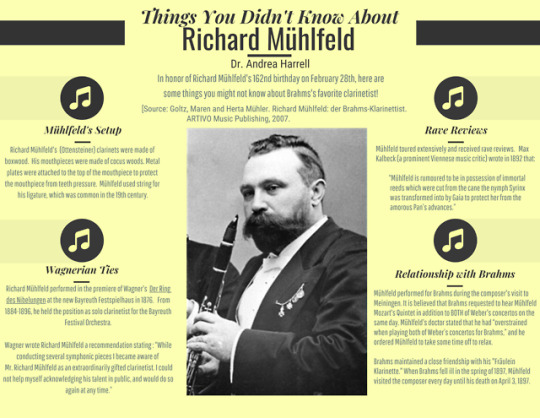Our D'Addario Woodwinds Method Clinicians are here to guide you towards your musical goals – tips on performance, practice, auditioning, reed care, and so much more! Keep up with our Clinicians' adventures around the country and plan your next trip to one...
Don't wanna be here? Send us removal request.
Text
“Love the Process” - Part VI: Treat Yo-Self | by Elizabeth Rosinbum

#6: Beyond Grit: Self-Care (and puppies)
The older I get, the more I understand that treating yourself is a vital aspect to long-term growth. I used to scoff at the “weak” musicians who took days off from practicing, because I assumed they were lazy, unmotivated, and lacking discipline. When we have hit the emotional, mental, spiritual, and/or physical wall, we must recognize in that moment that our rest is more important than our grit.
Give yourself the permission and space to take a breath. Don’t beat yourself up for not exceeding unrealistic self-imposed expectations. Sometimes we need to snuggle with a puppy and put our to-do list aside so we can return fresh and focused at another time. (And come on, who doesn’t love puppies!?) This is not “cheating”: it’s giving your entire self the necessary time to recharge and come back stronger than before. If you’re still feeling guilty, call your power partner like we discussed in Part III of this series. He/she will offer much-needed perspective and objectivity, and will call you out if you’re dwelling in fruitless negativity.
Space and time are invaluable tools for dealing with disappointment and burnout. Although I’m tempted to alter my curriculum throughout the year, I purposely do not touch it until the summer. When I do make changes in the summer, I have space away from the stress of the school year and plenty of time to work at whatever pace feels comfortable and productive. With fresh eyes and any residual anxiety from the previous year replaced with excitement for the year ahead, I can create clear objectives and strategies to improve weaker areas of my teaching that will make me a more effective musician and educator.
I hope you’ve enjoyed this series and continue to love the process of making music!
“Love the Process” - Part I: Introduction “Love the Process” - Part II: Love the Training, Not the Race “Love the Process” - Part III: Accountibility and your “Why” “Love the Process” - Part IV: Set Goals and Crush 'Em “Love the Process” - Part V: Work Small, Slow, and Smart

0 notes
Text
One Size Doesn’t Fit All! | by Andrew Martz

One of the fondest memories I have of starting college was my very first private lesson. As someone who had never taken a private lesson, I was both nervous and excited. After I had become situated with my horn out and music ready to play, my professor and I began with a discussion. We talked about repertoire, scales, and most importantly equipment. I had just purchased my very first professional saxophone and my professor wanted to discuss mouthpieces. As I had not purchased a top of the line mouthpiece, he quickly suggested one. I purchased it and played on it for several years, thinking that it was the best possible mouthpiece available. It was not until graduate school that I began to ask one very important question, “Why are there so many mouthpieces available and why do I play on what I do?”
Several years and mouthpieces later, this question has taken a new form in my livelihood as I am now asked on a regular basis by band directors, “What mouthpiece do you and your students play on and what should I suggest that my students get?” In a world of so many options, here are a few tips for choosing the right mouthpiece for yourself and for your students.
No matter the type or age of the saxophone, invest in a professional, hard rubber mouthpiece. The quickest way to upgrade your sound and experience playing the saxophone, whether it is as a beginner in 6th grade or a novice adult is to play on a quality engineered, hard rubber mouthpiece. From ease of playability to overall tone quality improvements, this will guarantee the largest single enhancement of your playing.
Consider your options. Once you have made the decision on a quality professional mouthpiece, do not take for granted things like tip opening, facing, and baffle profile. Do your research and play on as many different products as possible. If it fits into the category of a professional mouthpiece, play on it and consider if it is the right fit for you.
No one is the same, which means we do not all need to play on the same mouthpiece to produce a high quality tone. When it comes to refining your sound and creating a tone that is unique to you, one that you enjoy, it may be on an entirely different mouthpiece than your stand partner. If you have reached this level as a player, using your ears and your own thoughts on tone production will lead you to a happier performance experience.
Playing on high quality, well-crafted equipment is essential when playing any instrument. As more and more options become available, do yourself and your students a favor and try as much as is available to find the right product for you and your band program.

1 note
·
View note
Text
Using Technology to Improve Saxophone Vibrato Control | by James Barger

In working with intermediate and advanced students, I often find that one element lacking in their development is a fluid, vocal-like vibrato. Unlike most other wind instruments that employ a breath, or intensity, vibrato, saxophonists produce a vibrato by slight alteration in the pitch of a sustained note by alternately lowering and raising the jaw in a chewing-like motion.
The obstacle that many students encounter is that they have trouble conceptualizing the ideal vibrato sound and matching it on their instruments. I also find that a student’s perceived vibrato depth and the amount that is actually heard projected on the other side of a room is quite contradictory. The result is a vibrato that is so narrow as to not be heard at all or a wild “braying” vibrato that puts the student out of tune with other instruments and deceives the listener as to the actual notated pitch.
Master saxophone pedagogue Jean-Marie Londeix advocates for a vibrato that is “at the center of a stable, full sound.” If only we could get our students to practice creating a stable vibrato that does not alter the perceived pitch of the note and offer a tool that would allow them to receive immediate feedback for when the teacher is not present.
Tunable Mobile Application
Tunable is a wonderful app that is available on the Apple, Google, and Amazon mobile devices. The minimalist display provides excellent real-time information for the student to see their pitch over time. While this is a fantastic daily-use tuner, my primary use of this application has been to address concerns with vibrato.
In Tunable’s settings, there are three skill level presets: Beginner, Intermediate, and Advanced. Beginner considers notes 10 cents flat or sharp to be “in-tune”, Intermediate allows for 6 cents in either direction, and Advanced allows for 2 cents. In my experience, the Intermediate setting is best for vibrato practice.
I first have the student play the desired pitch with a pure, straight tone with the goal of centering the pitch within the green stripe.

This is an excellent way for the students to see the evenness of their sound, notice any imperfections or instabilities, and work on fine-tuning embouchure muscle control.
Once satisfied with the straight tone, I then have the student begin to introduce vibrato with the aforementioned “chewing” motion of the jaw.
For students who have not had any experience using vibrato, they might obtain a wildly erratic sound that is off the charts of the tuning app.

It is my recommendation that students gain control of the basic mechanics of vibrato by practicing rhythmic pulses with the use of a metronome prior to working with Tunable. Historically, trends in vibrato speed have changed, and will surely continue to change, based on performance genre and aesthetic taste; however, a good target rate for which to aim is approximately 300 vibrato undulations per minute. Thus, the student should practice and develop comfort and fluidity producing vibrato at the following rates:
• 4 pulses per beat at a metronome setting of 72 - 80
• 3 pulses per beat at a metronome setting of 96 - 104
• 5 pulses per beat at a metronome setting of 58 - 63
• 6 pulses per beat at a metronome setting of 48 - 52
After having completed the above exercises with great success, we then move back to the Tunable app for further development. As students begin to gain control of the muscles in the jaw and lower lip, we begin to see that the vibrato is relatively “in tune”, however, it is clear to see that, in this example, the vibrato is not smooth or even.

Through diligent practice, the help of a teacher, and the instant visual feedback provided through Tunable, the student quickly learns to create an even vibrato that does not interfere with the pitch center.

Once students have gained the control necessary to produce vibrato at an appropriate rate of speed and depth that is audible, but does not interfere with the pitch center, they should continue to refine their control by incorporating vibrato into their daily long tone studies so as not to lose the fine motor movements necessary to produce such a sound. The advancing student is encouraged to spend time listening to recordings of professional musicians, especially string players and vocalists, to absorb organically the use of vibrato into an expressive musical line.

hbspt.cta.load(3388095, '2decd3ce-157a-4291-9b44-493afd39d631', {});
2 notes
·
View notes
Text
“Love the Process” - Part V: Work Small, Slow, and Smart | by Elizabeth Rosinbum

I’m a planner. I’m very detail-oriented. Checklists, spreadsheets, and color-coded calendars are my jam. When someone tells me “we’ll cross that bridge when we get to it,” as in “what you’re asking about is an unknown detail,” my immediate response is to pack for a four-day hike with seven bottles of water, snacks, extra socks, two pairs of shoes, and maybe some evening wear (you don’t want to be that person that’s underdressed). Because I will be READY for that bridge! And I will be PREPARED!
Although I can’t prepare for everything life throws, I’ve learned to use my detail-oriented personality for productive practice. My practice routine can be summed up with 3 S’s: working Small, Slow, and Smart.
#5: Details
First, work small. Don’t sight-read a lengthy, technical passage at tempo. Like we teach beginners, you must start small. I’m not above playing one measure at a time at half tempo seven times before moving on; in fact, I preach the same method to my students. Never be afraid to play a small fraction of music exceedingly well before moving on to other projects.
Second, work slow. We’ve heard this adage no less than a million times, yet we consistently practice too fast. In addition to learning music with perfectly clean notes, rhythms, and intonation, slow practice helps us identify messy spots that were previously masked by speed (and therefore, sounded sloppy). This is because slow practice allows our ears to take in much more information, and we are therefore able to hear at a high level, finding new details that were previously overlooked.
Third, work smart. Don’t be in a rush to get everything done. If you do, your music will be sloppy and plateau for several months. Instead, trust your pace knowing that slow work is work well done. Trust the process, knowing that learning music takes time. This allows you to benefit from the solid foundation you built as a result of smart, methodical, detail-oriented practice.
“Love the Process” - Part I: Introduction “Love the Process” - Part II: Love the Training, Not the Race “Love the Process” - Part III: Accountibility and your “Why” “Love the Process” - Part IV: Set Goals and Crush 'Em

0 notes
Text
Selecting the Proper Reed Strength | by Nicholas Councilor

It is not surprising that reeds play a very important role in playing the clarinet. Likewise, it is crucial that you select a reed strength that works best for you. The first step in exploring a different reed strength is deciding if your current reed strength is working well for you. These lists might help you diagnose your reed strength problems:
Symptoms of a reed that is too soft:
Thin, bright, almost buzzing tone quality
Spread tone quality, often wild and out-of- control
Flat intonation
Delayed response—in the case of soft reeds, response is usually explosive. This is caused by the tip opening of the reed being completely closed due to the pressure exerted from the jaw. A harder reed might be able to better accommodate that pressure, but biting should be minimized.
Particular struggles with response in the upper register
Symptoms of a reed that is too hard:
Fuzzy, airy, dull tone quality
Sharp intonation
Delayed response—in the case of hard reeds, response is usually airy before the sound eases in. Often times there will be an airy delay between the articulation (release of the tongue from the reed) and the start of sound.
Particular struggles playing at soft dynamic levels
Requires excessive jaw pressure (biting) to produce sound
If you are experiencing any of these issues, you might consider changing to a different reed strength. Doing so will improve your tone quality and response, and allow for a more natural and enjoyable experience. If you do change strengths, the new reeds will likely feel different than you are used to. Be sure to give yourself at least a week to adjust to the new reeds and allow for them to break in properly.
Also, remember that there are different cuts of reeds, which offer even more possibilities! D’Addario currently has two different cuts for clarinet reeds: Reserve and Reserve Classic. You can learn how these two options are different by looking on the back of a box of reeds. Neither one is better than the other; they simply have different characteristics. Choose the cut that feels and sounds the best for you. Have fun exploring different reed options!

0 notes
Text
Questions to Ask If You’re Choosing a Music School: For Students | by Kristen Thompson

Part of successfully starting your journey in music is surrounding yourself with mentors and peers who will encourage your growth for the rest of your career. Selecting a school that meets your needs as a budding musician AND as a unique individual are equally important! Here are some suggestions to guide your thoughts as you consider your options:
What are the “must-haves” for my education?
Have you thought about what is most important to you in your college experience? For example: Do you want to stay in-state, or move across the country? Attend college in a big city or small? Study with a certain professor? What else is important to you in making this decision?
Can I see myself being happy on this campus? Do I like that it’s a major city/small town/close or far from home/etc.?
The location and layout of the campus are CRITICAL to consider when applying. What environment will you thrive in? There’s no right or wrong here, only what works best for you! Make every effort to visit the campuses to which you are applying.
Do I “click” with the studio faculty for my instrument? Who will I study with?
Your major influence during this time is your studio professor, who you will see weekly in your time at college! I can’t recommend enough that you reach out to the studio faculty prior to auditioning to see about meeting them while you’re visiting campus. For your top choice schools, ask about taking a lesson to get to know the professor and let them get to know you. Depending on the school, you may study with a faculty member or a teaching assistant. Ask about this and what the studio is like. What are the expectations? What musical opportunities are available students? How does this line up with what you want?
What else should I consider?
Do take some time to explore the “other” factors in your education. This might include: cost of attendance and fees, expectation/requirements to live on campus, double majoring/minoring requirements if you’re interested, acceptance of AP credits, or scholarship opportunities.
You’re going to invest so much time, energy, and money in your college experience. Start strong by doing your homework NOW to avoid cramming later. Best of luck to you!

hbspt.cta.load(3388095, '2decd3ce-157a-4291-9b44-493afd39d631', {});
0 notes
Text
“Love the Process” - Part IV: Set Goals and Crush ‘Em | by Elizabeth Rosinbum

“Never Miss a Monday.”
“Set Goals and Crush Them.”
“Love the Journey, Not the Destination”
I see a lot of inspirational quotes about goal-setting. Like most people, I scroll through my feed without stopping to reflect on motivation. If it’s really profound, I may give it a “like,” and then I move on with my life.
Maybe the saturation of inspirational quotes on social media has softened their impact. Or, maybe the reason it so challenging to take these adages to heart is because we are biting off more than we can chew. We get too overwhelmed by the enormity of the big picture; we are too scared of the unknown to move in a new direction; we have big, hairy, audacious goals, and yet feel too paralyzed to even start.
#4: Goal-setting
Regardless of the size of your goal, the tasks you create to achieve said goal need to fit three characteristics: tasks must be realistic, quantifiable, and attainable. Is it realistic to deep clean your entire house in 30 minutes using only a sponge? Unlikely, and therefore not a good goal. Can you measure quantifiable progress in a weight loss journey without first establishing a baseline? Sure, but without results it’s hard to stay motivated. Is mastering a new instrument in 30 days achievable? Nope, so that goal gets discarded as well. Change your thought process to have ALL your tasks fit these criteria and watch your productivity skyrocket.
Whenever I have a large project that seems too nebulous to break down into specific components, I break all my tasks into categories: daily, weekly, monthly, quarterly, annually, and beyond. Instead of seeing the difficulty of a new piece and discarding it as impossible, ask yourself what you can do in this practice session to move you in a positive direction. Learn 1 measure in the next 3 minutes (realistic: check, quantifiable: check, attainable: check.). Maybe stretch that to the first phrase, and put it away for the day. Come back and repeat the process tomorrow, connecting individual tasks brick by brick until the goal is reached.
“Love the Process” - Part I: Introduction “Love the Process” - Part II: Love the Training, Not the Race “Love the Process” - Part III: Accountibility and your “Why” “Love the Process” - Part V: Work Small, Slow, and Smart

0 notes
Text
The Secret to Multiple-Tonguing | by Zach Stern

Gotcha! Unfortunately there are no “secrets” or shortcuts to multiple-tonguing, just as there are no shortcuts toward mastery of any musical skill. Some people, of course, can figure certain techniques out more quickly than others, but true mastery rarely comes in any package other than dedicated, focused, and thoughtful practice.
Multiple tonguing, otherwise known as double- or triple- tonguing, is possible on any wind instrument. Such articulation on instruments such as the clarinet and saxophone is not quite as natural as, say, the flute, for which there is no mouthpiece inside of your mouth to affect the position of your tongue. In order to execute this technique (no longer considered an “extended” technique, by the way), you alternate between using a normal single-tongue stroke (‘Ta’ or ‘Da’) and a stroke in which the back of your tongue contacts with the back part of the roof of your mouth (‘Ga’ or ‘Ka’). Which back syllable you use mostly depends on the musical situation, so it is important that you practice both (with ‘Ga’ giving you a more legato sound than ‘Ka’).
For anyone whose single tongue speed isn’t limitless (everybody?), being able to double tongue can theoretically double your tongue speed (as long as you work up the back syllable to be just as fast as your front syllable). So for most people, unless you are a freak of nature, the limiting factor to your multiple tongue speed is the back syllable.
Getting Started:
It helps to get used to the physicality of using both parts of your tongue to articulate (remember, one side contacts the reed, the other side contacts the back of your mouth) away from the instrument. In your spare time, preferably when you are alone, practice saying, ta-ka-ta-ka, da-ga-da-ga, ga-ga-ga-ga, etc. (It might also help to imitate a certain cartoon character created by Seth MacFarlane whose “catch phrase” involves many ‘guh’ sounds.)
When you start practicing on your saxophone or clarinet, slowly practice articulating with the front and back of your tongue, trying to match the two. Some common problems in the beginning of the process to be aware of are:
Distortion of the sound - You have to move the tongue only as much as it takes to articulate. If your tongue position changes too drastically as a result of the motion, you will hear pitch and/or timbral distortion.
Rhythmic unevenness - If you try to articulate even 8th notes, sometimes they will morph into a dotted pattern. Do your best to keep the air strong so that any awkwardness of the tongue motion doesn’t alter your rhythm.
Incorporating multiple-tonguing in your practice
Start slowly and focus on isolating the back syllable and matching the sound of the front and back articulations.
It’s easier in the middle register, but once you figure it out there, don’t be shy about applying it in the lower and upper registers. It all comes down to tongue position and airspeed, and understanding how to sound as clean as possible.
Double- and triple-tongue your scales and arpeggios. Again, start with fragments, work up to 1 octave, then 2 octave, then full range, etc. Then apply to any technique exercise: double-tongue your thirds, fourths, etc. Double-tongue your overtones! That’ll really throw you for a loop to maintain the right voicing to play higher partials on your instrument and double- or triple-tonguing them.
Find repertoire that demands fast tonguing. Some places to look might include the early 20th-century saxophonist Rudy Wiedoeft and trumpet virtuoso Rafael Méndez. There are tons of pieces for violin or cello or even flute that would require you to use these skills.
Have fun with it and create your own exercises! And practice on your whole arsenal of saxophones or clarinets, not just alto sax or Bb clarinet!
Triple-Tonguing:
As a point of clarification, there is no 3rd syllable in triple tonguing. Double tonguing is TA-KA-TA-KA or DA-GA-DA-GA, while triple tonguing may involve a repetition of a front syllable. The following examples are possible triple-tongue combinations:
TA-TA-KA TA-TA-KA
TA-KA-TA TA-KA-TA
TA-KA-TA KA-TA-KA (I use this most often since it is the same as double tongue – you just need to get used to accenting the back syllable when it lands on the beat.)
Hopefully this relatively short blog post gives you some material to chew on whether you’re new to multiple-tonguing or looking to improve your multiple-tonguing skills. For most of us, it takes a while to figure this stuff out, but if you’re diligent and don’t get discouraged by slow but steady progress, you will be wowing audiences with your impressive tonguing soon enough! Happy practicing!

0 notes
Text
Staying Productive with Unprepared Saxophone and Clarinet Students | by Sean Hurlburt

Every week I’ll have a few students who come to their lessons unprepared. This can be frustrating as a teacher, especially with repeat offenders. If it ever gets completely out of hand, and it becomes clear that the student is not interested in playing their instrument outside of the classroom, then it may be time to have a serious discussion about discontinuing lessons. Even when your students come to their lesson unprepared it’s still your job as the instructor to make the most of your time together. Here are a few strategies that can keep things productive even when your student didn’t practice.
Review Their Previous Assignment
If I’m really low on energy then I’ll just recap their previous assignment. I’ll use the lesson as an opportunity to guide them through the practice session they should have had on their own. This guided practice is better than anything they would do on their own, and can serve as an opportunity to teach the student how a professional prepares music. Students are usually surprised by how many perfect repetitions I require them to perform before I let them move on from a difficult passage.
Harmonize Scales
This is hyper-specific and may only apply to saxophonists, but when my students play their scales for me I’ll usually harmonize with them. It sounds great, and gives you something to do if their scales are slow and unprepared. You can play in thirds or bigger intervals like tenths to reach into the altissimo. I especially like playing a third above my saxophone students when they play their “full-range” scales because I get to creep into the altissimo. While my students are playing Fs and F#s, I’m working on my As and A#. Crossing over the altissimo break on the saxophone is very difficult, so the more reps I can get in this range the better. Harmonized scales sound cool, are challenging for the teacher, and help the student learn their scales. Use your best judgment. For example, harmonizing a beginner’s G-major scale an octave and a tenth up may not be the most productive thing to do.
Discuss Reed Routines
If a lesson is going especially slow, I’ll pull out some new reeds and use it as an opportunity to explain my reed routine. This might seem rude at first, but as a music teacher sometimes I get caught up in only teaching the music. I often forget to explain the nuts and bolts of saxophone maintenance, which includes prepping, storing, and rotating reeds. This investment in time will pay dividends in the future, as your student will show up to lessons with better reeds, and, thus, a better sound. Going through my reed routine with students, to me, is time well spent.
Duets
It’s helpful to have several levels of duet books handy. I have a range of duet books that accommodate sight reading levels from beginner to professional. I often neglect to assign duets, but they are invaluable to developing students. It may be the only chance a middle or high school student has to play music with a professional musician. Not only that, but after playing they receive immediate feedback on the music.
Learn Simple Melodies
I have a list of about 100 melodies that I expect my students to learn by ear. They are common nursery rhyme-like melodies such as Mary Had a Little Lamb, Oh Susannah, or La Cucaracha. When a student is unprepared, I’ll defer to this list and assign them a melody to figure out on the spot. You can make melodies more difficult by assigning them in different keys, “Play Jingle Bells in F# major.” You can also use melodies as an opportunity to teach some music theory by asking questions like, “On what scale degree does Happy Birthday begin?”, or “What chord is outlined by the first three notes of The Star Spangled Banner?”
Sometimes teaching can be a grind. That’s no secret. However, if you implement some of these strategies, even with your prepared students, it can still keep things fresh and productive.

hbspt.cta.load(3388095, '2decd3ce-157a-4291-9b44-493afd39d631', {});
0 notes
Text
Rehearsal & Performance Etiquette | by Patrick Rehker

When I was 17 years old I was fortunate enough to participate with the Eastern Music Festival. It was a great opportunity to meet new people, learn so much about music, and play amazing repertoire. During the first week we played Alpine Symphony by Richard Strauss, and I was on Eb clarinet. Being somewhat new to the instrument, and having to learn a lot of hard music, I was trying to keep up with the rest of the group. In rehearsal we’d be playing, and a flute player would turn around and look at me while I was playing. Feeling uncomfortable, I immediately began to second-guess everything I was doing. This kept happening, and not just to me. Other players got the “stare”.
What the flute player did was innocent, however, it was not the best thing to do in rehearsal. Some behaviors can be distracting and considered rude even if they are not intended. Here is a small list of things to avoid in a rehearsal/performance setting:
Never watch or stare at a person playing. You may be watching because the player is sounding so good, but it can affect that person greatly. Instead, wait until after the rehearsal/performance and tell the player how much you enjoyed their playing. It will be much more appreciated. Also, if you hear someone struggling on a part- you really do not need to look. It should be quite obvious the player that it’s not going so well. Be respectful!
Do not play someone else’s solos while warming-up. If they are not yours to play, simply do not play. If you like the solo that much, practice it in private away from those around you.
Do not wear cologne or perfume on stage. While you may think it smells great, it can bother those sitting around you. Save the good-smelling stuff for the after party!
Put your phone away during rehearsals. If you use it to tune, make sure to properly store it away as soon as you are finished. Even with the phone on silent, the screen lighting up is distracting, as is hearing the phone vibrate.
Keep excess noise to a minimum. Sitting next to someone who is really disheveled and constantly making noise (opening a case/bag, exaggerated movement, talking) can interrupt the concentration level. Come prepared and early enough to set up and get situated.
Keep these things in mind before your next rehearsal or performance to enhance the whole music-making experience. Be kind and respectful to those around you, after all it is a group effort!!!!

hbspt.cta.load(3388095, '2decd3ce-157a-4291-9b44-493afd39d631', {});
0 notes
Text
The Battle Against the Bite | by Jessica Harrie

When I first started playing the clarinet in the sixth grade, I developed a bad habit of biting. When I would get tired, I often found myself trying to maintain the same quality of sound by biting. This was a difficult habit to break. Because the lip is integral in creating the tone, it is important to understand what happens when you bite, and to be aware of how your mouth feels when you become tired.
The lip forms a sort of pillow between the reed and the teeth. When the embouchure muscles are strong and set properly, the reed is able to vibrate freely. The resulting tone is better, presenting more overtones. When you bite, the tone becomes thinner and more strident.
So how can you help your students (or yourself) avoid biting?
Mouthpiece patches can help create a more stable surface on the mouthpiece, preventing unnecessary fatigue. I prefer the thicker, black mouthpiece patches.
Long tones are vitally important to building stamina. Doing long tones during each session will help insure that you can play demanding music for longer periods without biting. There are a variety of ways to play long tones to both keep them fresh and challenge you in different ways. A couple suggestions are:
Chromatically up and down
Intervals: 3rds, 4ths, 5ths, etc.
Dynamic variation (ppp-fff-ppp, fff-ppp-fff, etc.)
Double lip embouchure can be used to discourage biting. In my own warm-up, I do my long tones and scales using double lip and then move to single after the warm-up.
Have you ever struggled with biting in your playing or with your students? How did you approach it? What suggestions do you have?

hbspt.cta.load(3388095, '2decd3ce-157a-4291-9b44-493afd39d631', {});
1 note
·
View note
Text
Adventures in Self-Publishing | by Larkin Sanders

When I passed my doctoral defense at Florida State University, my committee members strongly encouraged me to embargo my treatise and to publish it independently. I also got tired of folks asking me for coffee in exchange for all of my knowledge. I know that my market is TINY, so this is a great way for me to share my books with my tiny market. After exploring my options and acknowledging that my book, The Creation of the Taneycomo Festival Orchestra: The Performer’s Field Guide to Music Festival Foundation is an extremely niche document, I opted for self-publishing. Since then, I have also self-published 4 etude books and have continued to self-publish all of my compositions (ASCAP, Lark in Print Publishing). Here’s how I did it and what I learned:
My Chosen Prose Platform: CreateSpace
I researched many on-demand print publishers after I ruled out the idea of submitting my paper to a formal publisher. I chose CreateSpace for several reasons:
The service is free. While they offer marketing services and cover design services, I opted to take care of those things myself so creating all of my books has been free. They do take a fee for each sale, but there is no upfront cost.
CreateSpace is owned by Amazon. Books are made-to-order and available for Prime shipping. This makes them easy for your audience to find and purchase.
CreateSpace deposits royalties directly into your bank account and provides you with sales reports. Once your book is uploaded and approved, the selling process is virtually hands-free.
My Chosen Music Platform: ASCAP, Square, and My Home Office
I am a member of ASCAP as a composer and a publisher. My publishing company is called Lark in Print (I got puns for dayz!). When registering pieces on ASCAP, a maximum of 50% of royalties go to the composer, which means that the publisher receives at least 50%. This seems totally backwards, right? So, I pay $100/year to be an ASCAP Composer and Publisher, and ASCAP protects my intellectual property rights and collects royalties from the appropriate source when my pieces are performed.
I use Square to sell sheet music on my website (www.LarkinESanders.com). Customers can purchase online, and I’m notified by email when pieces are purchased.
I invested in a great black and white laser printer, a comb binding machine, combs, clear plastic covers, black plastic covers, white paper, and brightly colored paper for about $400. These tools allow me to distribute my own sheet music quickly, efficiently, and attractively. I have also sent PDFs to customers in good faith and by communicating that it is illegal to redistribute the piece.
The Benefits of Self-Publishing
You receive 100% royalties. as your own publisher, regardless of whether your publishing prose or music, you receive 100% of the royalties earned by purchases.
There are free options. CreateSpace and other on-demand printers like Omnipress, Lulu, and Archway allow you to create your book for free.
You can also pay for some additional services. Lots of on-demand printers will do some marketing for your and even promote your book to major publishers, but they will do it for a pretty penny!
You can target a specific audience. Many printers offer marketing services, but they are hard to navigate and target the right audience, which can be a challenge if you’re not working with a music-specific printer.
You can order your own copies for your own use. I try to have several books on hand at any given time because they are great networking tools, and friends are happy to purchase discounted books. Plus, you never know when that cute little local book store will be looking for the next great local author!
The Downside of Self-Publishing
It requires lots of extra skills. A self-publisher must have an eye for details and proofreading, graphic design capabilities (or friends who are designers), and marketing skills.
You have to hustle. If you don’t pay for marketing services, then you have to sell the books yourself.
It’s not a great way to make money. If you need to turn a substantial profit from your book, self-publishing is probably not the way to go. Royalties from The Creation of the TFO go straight into the Taneycomo Festival Orchestra bank account, so I am using it as a fundraising tool for my festival, rather than for personal gain.

hbspt.cta.load(3388095, '2decd3ce-157a-4291-9b44-493afd39d631', {});
0 notes
Photo

by Andrea Harrell

hbspt.cta.load(3388095, '2decd3ce-157a-4291-9b44-493afd39d631', {});
#blog#photo#daddariowwmethod#practicingwiththeflu#for everyone#for clarinetists#for saxophonists#performance & practice tips
1 note
·
View note
Text
Playing Scales in a Group Clarinet Class | by Mallory Tittle

I teach for an el Sistema program called Tune Up Philly that meets multiple times per week. In those classes, students are on different playing ability levels and different ages from 8-13. While everyone plays different music parts based on ability, there’s one thing that everyone plays together despite ability: scales.
As we all know, scales is something that will never go away despite how long we have been playing. Scales can be used in different areas of a warm up such as tone, technique, and tonguing. For my Tune Up Philly students, we have “ScaleFest,” which is playing all the flat scales one day and the sharp scales on another day. Students play scales individually and get a higher score if all scales are memorized. Beginners learn scales in one octave, intermediate players learn two octaves, and advanced players learn the third octave in select scales.
When we play scales together in class, we play in unison whole notes in the first octave so the beginners can hear how the scale is played and can play along with students who have higher abilities. Then, we play in whole notes in different octaves depending on ability. Last, we play in unison whole or half notes in the form of a chorale. Students play the same notes and enter at different times to where it sounds like a triad when everyone plays together. Playing chorale scales is one of the student’s favorite things to do.
Tune Up Philly students will eventually audition for higher-level youth orchestras. When they are ready to audition for those groups, they will all know every major scale in at least two octaves.
0 notes
Text
“Love the Process” - Part III: Accountability and Your “Why” | by Elizabeth Rosinbum

#2: Find your accountability partner
My best friend is a talented saxophonist, fantastic teacher, and a killer business-woman. A lot has changed since we first met nine years ago, but one of my favorite things about our friendship that has never changed is that we hold each other accountable. It’s an unspoken agreement that we support each other in tough times, celebrate in successes, and bring each other down to earth when we fly too high (which has yet to happen, and I doubt it ever will…)
As my accountability partner, she’s my first call on rainy days when I’m feeling defeated. When I have an off teaching day, a poor rehearsal, or feel discouraged, I know I can call her to help me gain perspective and get out of my funk. In short, she helps me get back in touch with my “why” - the reason I became a musician in the first place - when the daily pressures cause me to lose sight of the bigger picture.
#3: Find your “why”
In addition to having a “who,” an accountability partner, you need a “why,” a reason to hold yourself accountable. Your “why” is your rooted in your core beliefs, and it should resonate deeply with you. Merely trying to find your “why” can be extremely useful.
The process of identifying your “why” is simple: ask yourself why you’re doing what you’re doing five times until you get to the root motivation. I’ll elaborate on this in a later blog series, but for now, your “why” should have two components: it must be deeply meaningful to you, and it must be “big picture” - not a 6 month goal or a 5 year goal, but a lifetime goal. The weight of your “why” is a powerful motivator that can right the path when you lose sight of your mission and purpose.
“Love the Process” - Part I: Introduction “Love the Process” - Part II: Love the Training, Not the Race

hbspt.cta.load(3388095, '2decd3ce-157a-4291-9b44-493afd39d631', {});
0 notes
Text
Clarineting During Cold and Flu Season - Part 1: Sanitizing Your Clarinet | by Andrea Harrell
Cold and flu season is approaching quickly! Sickness has a funny way of occurring at the worst possible time. Sometimes it simply isn’t possible to stop your practice routine when ill. I can’t tell you how many times I’ve had to maintain a rigorous practice schedule while battling severe cases of the flu and strep throat!
If you find yourself sick this winter, make sure to take the following steps after each of your sick- day practice sessions to avoid perpetual reinfection.
Wash your hands before playing. Refrain from doing a myriad of gross things when you have your instrument in your hands ☺

Select a couple of “sick reeds” to play on from your regular rotation. Place your “sick reeds” in a separate reed case. Use only these reeds as you fight off your illness. When you are healed, throw these reeds away!
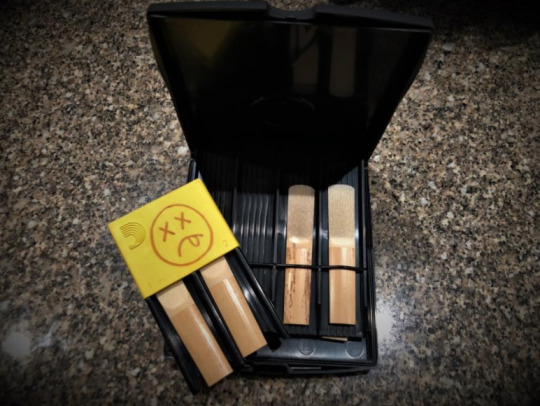
**Sanitize your reeds after each use by placing them in a small container of hydrogen peroxide. Soak for 20-30 seconds. **

Sanitize your mouthpiece after each use
1.Squirt dish soap inside the window of your mouthpiece. Use a cotton swab to gently “scrub” the inside and outside of your mouthpiece.

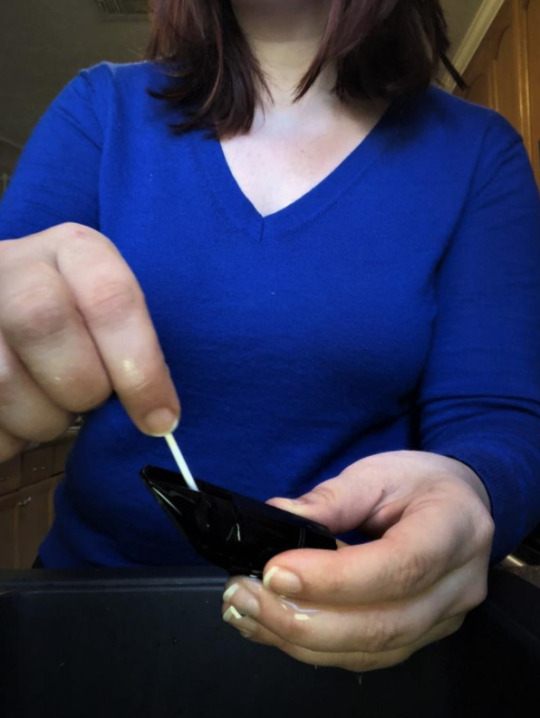
2.Rinse the soap from the mouthpiece under a gentle stream of warm water. It is OK if the cork gets wet, simply dry it off after you finish.
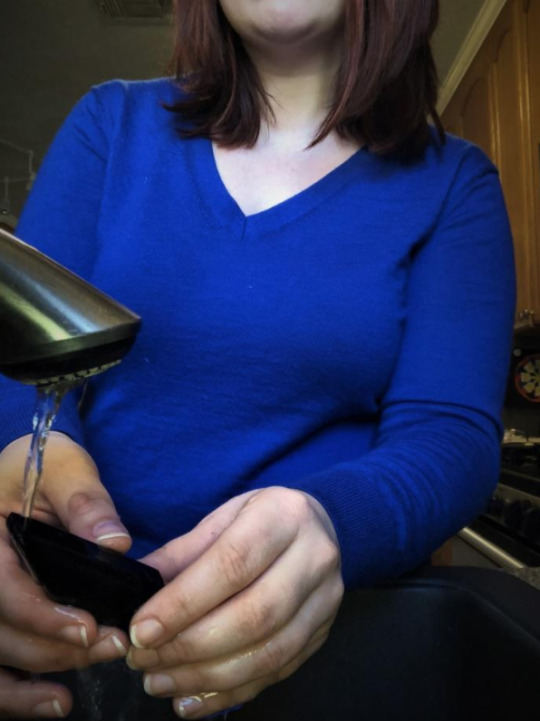
Let the mouthpiece air-dry on a clean cotton cloth.
Swab your instrument after every use. Hand wash your swab with a gentle detergent once a week until you feel 100%.
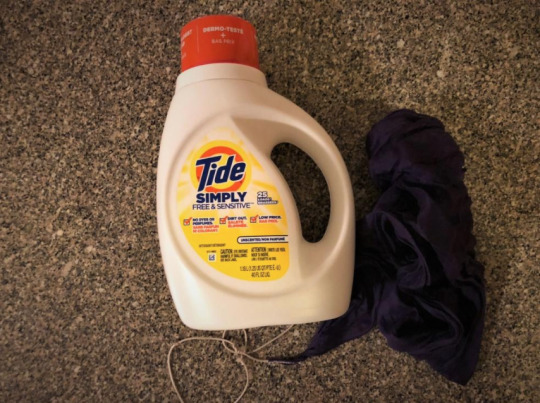

hbspt.cta.load(3388095, '2decd3ce-157a-4291-9b44-493afd39d631', {});
0 notes
